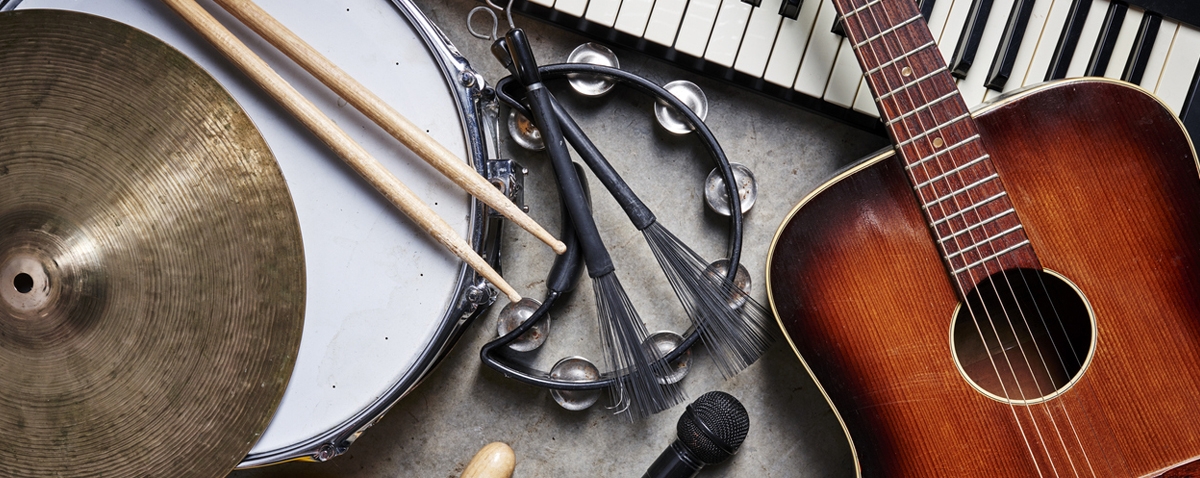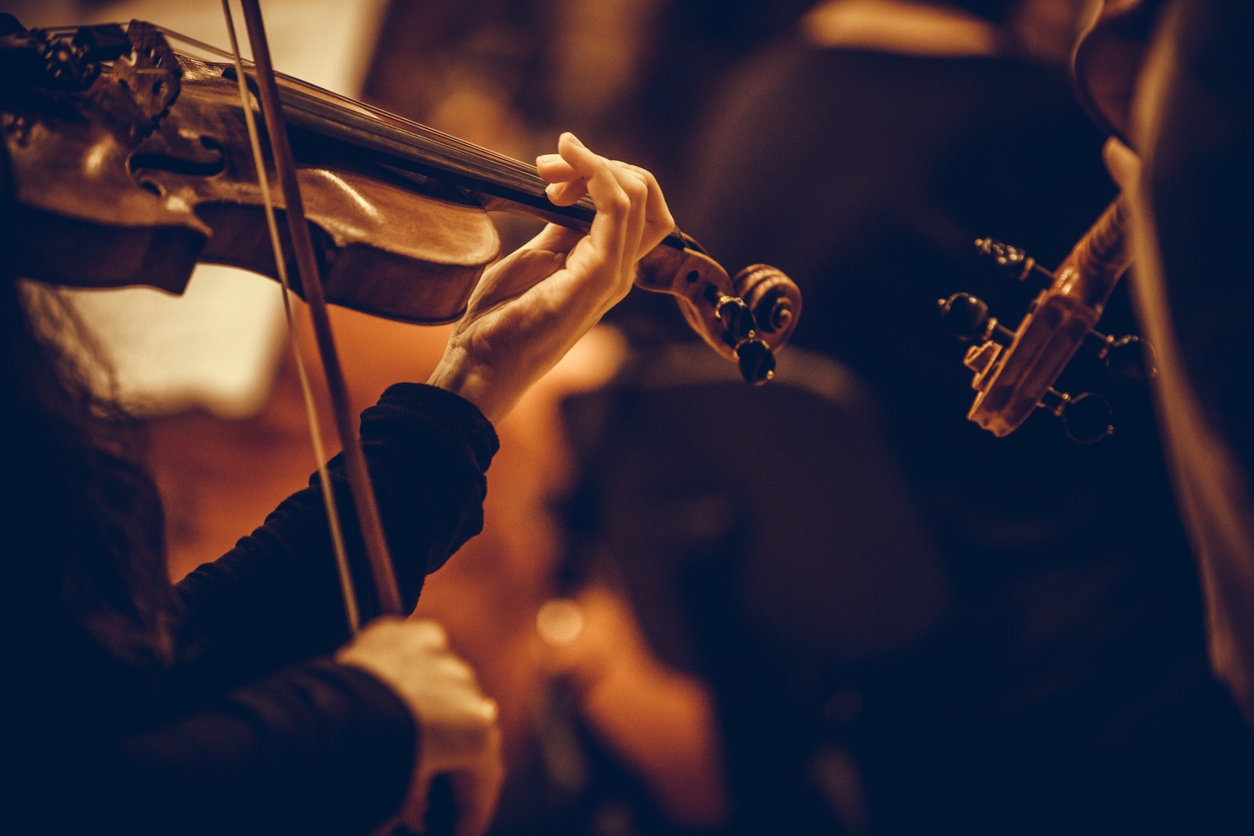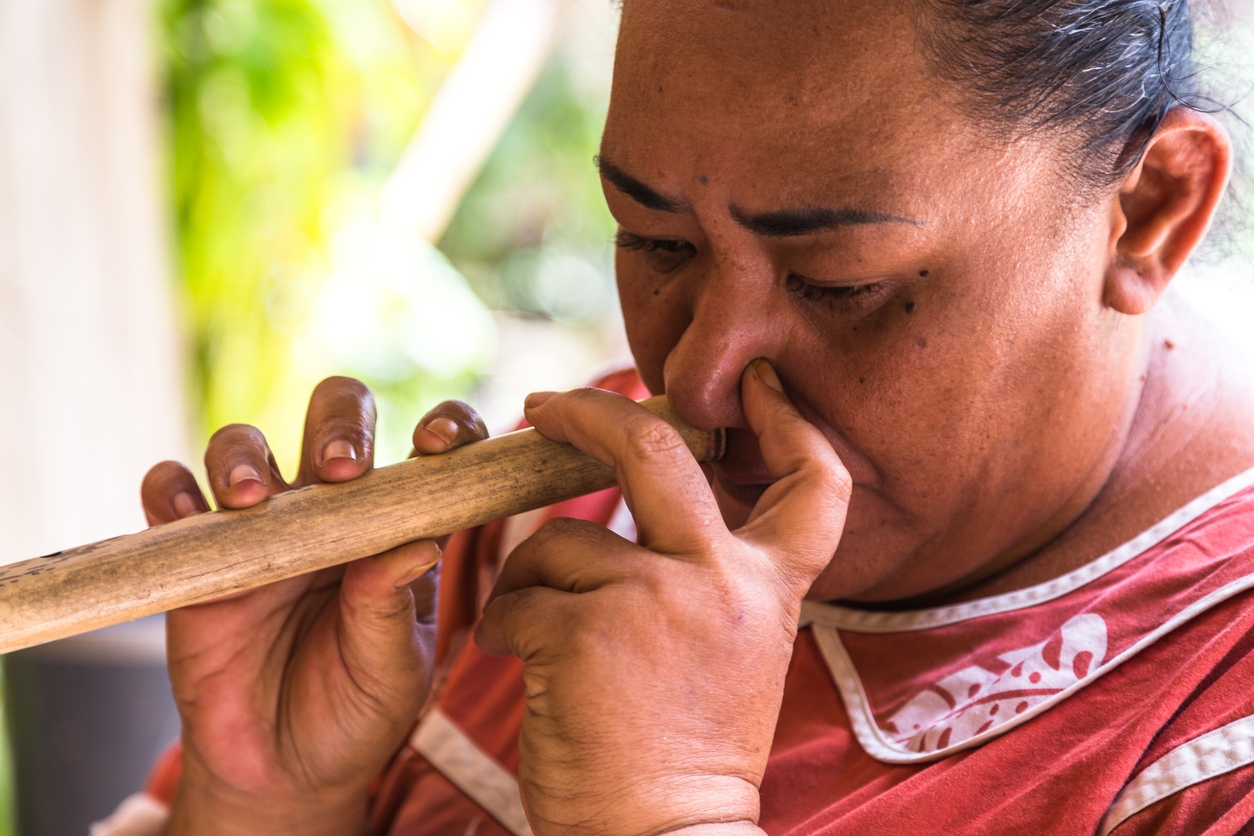Music is a universal language that does not recognize borders and cultures. It’s an integral part of our lives that evokes emotions, memories, and joy. Behind every melodious tune there lies a world of craftsmanship, history, and ingenuity. Each musical instrument that we use has a story. Whether it is a humble flute or a grand piano, each tool contributes to the rich tapestry of musical expression in its own way.
In this blog post, we uncover 20 surprising facts about various musical instruments. From the unexpected origins of iconic instruments to the quirks that make each one unique, these facts are bound to leave you astonished. Knowing them will not only broaden your understanding of the instruments themselves, it will also deepen your appreciation for the musicians who master them. Let’s begin!
The Oldest Instrument – The Neanderthal Flute
Humans have always had a fascination with sound. The world’s oldest musical instrument dates 50,000 years back. The archeologists found it in the cave of Divje Babe in Slovenia. It lay beside a hearth once used by Neanderthals. [1] While its notes may never grace modern concert halls, this relic reminds us of the universal human impulse to create and express through music.
Gravity Roll – A One-Stick Drum Roll
The drum roll has always stood as a symbol of anticipation and excitement. Traditionally, this technique requires two drumsticks working in tandem to create a rapid, rhythmic sound. However, it is possible to produce it with one hand too. A technique known as the ‘Gravity Roll’ challenges conventional drumming wisdom. Gravity Roll involves striking the drum while resting the stick on its rim. Then bring the back of the stick down in a seesaw motion. And then quickly bring the stick back up before striking the drum again. [2]
Xylophone – The Scarecrow of Senegal
The Xylophone is a musical instrument made up of wooden bars that, when struck with mallets, produces melodious sounds. In Senegal, a country in West Africa, xylophones served a unique purpose beyond music. The farmers in Senegal noticed that birds and monkeys were feasting on their crops. To ward off these hungry intruders, they placed xylophones in their fields and rigged them to play music when the wind blew. The unexpected sounds startled the birds and monkeys, scaring them away from the crops.
Piano Complexity – A Symphony of 7500 Parts
A piano is a musical instrument with a keyboard. When you press a key, it causes a felt-covered hammer to strike a string inside, producing sound. It’s known for its wide range and expressive capabilities. Piano comprises a staggering 7500 working parts, each contributing to its ability to produce a rich and diverse range of sounds. There’s a delicate balance within the piano’s inner workings. If even one of these intricate components becomes dysfunctional or falls out of tune, it can disrupt the instrument’s harmonious symphony. [3]
The Mughlai Sitar – A Multi-Stringed Marvel
The sitar is a traditional Indian musical instrument with a long neck and a gourd-shaped resonator. Sitar is known for its intricate strings and distinctive, captivating sound, often used in classical Indian music. What sets the sitar apart is its potential for complexity. This unique instrument gained its popularity through the influence of the Mughal emperors who ruled India centuries ago. [4] It was during their rule that the sitar underwent significant refinements and innovations.
Flutist or Flautist? The Musical Terminology Dilemma
“Flutist” and “flautist.” are the two terms that you may use when referring to someone who plays a flute. [5] They have been used interchangeably, and the preference often depends on regional dialects or personal preference. However, the term “flautist” has an interesting linguistic background. It derives from Latin, where “flauta” referred to a flute-like instrument. Over time, it acquired a somewhat negative connotation in Latin, as it was associated with a simple or crude version of the flute.
Bagpipes’ Global History – A Musical Journey Across Cultures
Bagpipes are known for their distinctive and often rousing melodies. They consist of a bag, often made from animal skin or synthetic materials, with pipes attached.
Long before they became synonymous with Scotland, bagpipes were embraced by diverse communities, including the Turkish, Asians, Africans, and Persians. [6] These cultures crafted their own versions of bagpipes, each with its own character and sound. It was only in the later stages of history that bagpipes became most strongly associated with Scotland.
The Therapeutic Power of Instruments – A Healing Harmony
The idea that musical instruments possess therapeutic qualities has been around for centuries. From ancient civilizations to modern ages, people have harnessed the calming, healing, and uplifting effects of music. Music therapy, a field that has gained recognition in recent decades, utilizes the power of instruments to aid in physical and emotional healing. [7]
Simple, repetitive melodies played on instruments like the flute or soft strumming on a guitar can calm anxious hearts and ease troubled minds.
Cello’s Full Name – A Quirky Abbreviation
The cello is a musical instrument that’s part of the violin family. It is known for its deep, soulful tones and is played with a bow. Not many people know, but the cello has a unique and somewhat quirky full name “violoncello.” [8] This Italian word translates to “little big viola” and reflects the cello’s unique position in the string family. It’s smaller than a double bass but produces tones with a resonance that rivals its larger counterparts.
Fiddle vs. Violin – Strings with Diverse Styles
A fiddle and a violin refer to the same musical instrument. They consist of strings stretched over a resonating chamber and are played with a bow. Both produce beautiful sounds. While fiddles and violins share a lot in common, they are often considered different instruments primarily because of the music styles associated with them. When played in folk, country, or traditional music, it’s often called a fiddle. In classical music contexts, it’s referred to as a violin. [9]
Talking Drums – African Messengers of Sound
Across the vast African landscapes, where words alone couldn’t bridge the distances, a remarkable form of communication emerged – the talking drums. For centuries, these ingenious instruments have been used to transmit messages across long stretches of land. [10] Skilled drummers could convey intricate messages by varying the pitch and rhythm of their beats.
The Largest Musical Instrument – A Stone Marvel in Virginia
The Great Stalacpipe Organ is an awe-inspiring musical wonder constructed from stone. [11] Situated in Virginia, USA, its pipes and intricate parts stretch across a colossal three acres of underground terrain.
This unusual instrument produces ethereal melodies by tapping into the resonant qualities of the cavern’s natural stalactites. When keys are pressed on the console, rubber mallets gently strike these hanging mineral formations, releasing hauntingly beautiful notes that reverberate throughout the cave.
The Self-Playing Pianola – A Musical Marvel
Imagine a piano that doesn’t require a pianist’s touch to create beautiful music. A pianola is a remarkable type of piano with this special ability. Instead of relying on a skilled musician to press its keys, the pianola relies on rolls of paper with tiny holes meticulously punched into them. As the paper roll is threaded through the piano, a complex system of gears and suction pumps comes to life, translating the pattern of holes into music. [12]
The Stylophone – A Musical Playground for 1970s Kids
In the groovy era of the 1970s, a charming musical device known as the stylophone captured the hearts and imagination of children. This hand-held keyboard, which you operated by gently tapping its keys with a stylus, brought music to the fingertips of countless young enthusiasts. As children ran the stylus over its keys, they created melodies that resonated with the spirit of the times. [13]
Ancient Egypt’s Percussion Legacy
The Ancient Egyptian Empire was not just a cradle of civilization but also a vibrant hub of musical expression. The Egyptians embraced percussion instruments with a fervor that transcended language and culture. These included drums, tambourines, and rattles, all designed to create enchanting rhythms that resonated with the spirit of the Nile. They were used in ceremonial rituals, accompanying dancers as they weaved stories of gods and legends. [14]
An Unusual Instrument – The Nose Flute
Amidst the vast array of musical instruments, there exists a unique and somewhat unconventional member – the nose flute. It is a peculiar instrument that may raise eyebrows but showcases the boundless creativity of human expression. Crafted from bamboo, it challenges conventional norms, relying on the nose as a sound-producing vessel. The nose flute is played by exhaling through one nostril into the mouthpiece. [15] Its ethereal, haunting tones have enchanted cultures across the globe.
The Blackpool High Tide Organ – Nature’s Music
The Blackpool High Tide Organ is a unique musical instrument that harnesses the power of the sea’s waves to create music. It combines the majesty of the ocean with the elegance of a pipe organ. When the waves come in, they push air through the pipes, producing hauntingly beautiful melodies. [16] This extraordinary creation marries nature and music, offering a mesmerizing experience for all who listen, as the sea itself becomes a composer of harmonious tunes.
A Million Dollar Investment – The Legendary Stradivarius Violins
Stradivarius violins, crafted by the Italian luthier Antonio Stradivari in the 17th and 18th centuries, are nothing short of legendary. [17] These instruments are cherished for their beauty and extraordinary sound quality. Crafted with unparalleled precision and artistry, these violins have mesmerized audiences for centuries. Musicians and collectors worldwide prize them as priceless treasures, and their enduring mystique continues to captivate generations of music enthusiasts. The original Stradivarius violins are sought-after musical instruments commanding prices in the millions.
Miniature Marvel – The 10 Micron Guitar
In the world of musical miniaturization, a fascinating record stands tall – the world’s shortest guitar, measuring a mere 10 microns. [18] To put that into perspective, a human hair is about 75 microns thick. This remarkable feat of precision engineering showcases the boundless creativity of scientists and musicians alike. While it may not serenade audiences, it serves as a testament to human ingenuity, proving that music can resonate even in the tiniest of forms.
The Piano – An Unclassifiable Wonder
The piano, a majestic musical instrument with keys and strings, is a marvel of both engineering and artistry. Yet it doesn’t neatly fit into the categories of string, percussion, or keyboard instruments. This 88-key marvel possesses strings but is struck like a percussion instrument, all while being controlled by keys. Its classification defies tradition, making it a unique masterpiece in the world of music.
Conclusion
The world of musical instruments holds so many intriguing facts and stories. From the world’s oldest instrument to the dual nature of the piano, we have uncovered 20 of them for you, but there are so many more. Whether you’re a seasoned musician or simply someone with an appreciation for music, delving into these tidbits can be fascinating. Take a moment to explore the diverse music-making tools and be ready to be surprised with the cool facts that turn up.
References
- Hear the world’s oldest instrument, the 50,000 year old neanderthal flute. (2021, October 1). Classic FM. https://www.classicfm.com/discover-music/instruments/flute/worlds-oldest-instrument-neanderthal-flute/
- Gravity roll. (n.d.). Academic Dictionaries and Encyclopedias. https://en-academic.com/dic.nsf/enwiki/1470778
- Design2, R. S. (2022, August 16). What’s wrong with my piaNo. 8 common problems. Bradfield Piano Restoration, Moving & Storage. https://bradfieldpiano.com/common-piano-problems/
- Featured object: Indian sitar. (n.d.). Spurlock Museum, U of I. https://www.spurlock.illinois.edu/blog/p/featured-object-indian/42
- Flutist or flautist? (2020, October 6). Lessonface. https://www.lessonface.com/content/flutist-or-flautist
- Types of bagpipes. (n.d.). Bagpipes – Introduction to Bagpipes, Smallpipes and Bagpipe Chanters. https://www.bagpipes.co.uk/types-of-bagpipes.html
- MusicGuard. (n.d.). Music insurance | musicGuard. https://www.musicguard.co.uk/benefits-of-playing-instruments
- 9 things you never knew about the cello. (2014, October 8). Los Angeles Chamber Orchestra. https://www.laco.org/cello-blog/
- Dolce-Admin. (2020, December 20). What’s the difference between a fiddle and a violin? Dolce Violins. https://dolceviolins.net/blog/whats-the-difference-between-a-fiddle-and-a-violin-2/
- Rodriguez, W. (2019, February 6). Archaic roots- Indigenous instrument maker – Talking drums:… Archaic Roots- Indigenous Instrument Maker. https://www.archaicroots.com/drums/talking-drums-ancient-storytellers-west-africa/
- The great Stalacpipe organ. (n.d.). Luray Caverns. https://luraycaverns.com/news/the-great-stalacpipe-organ/
- Pianola: All you need to know. (2022, September 2). Welcome to Classical-Music.com – Classical Music. https://www.classical-music.com/features/instruments/pianola/
- Hey, what’s that sound: Stylophone. (2009, July 6). the Guardian. https://www.google.com/amp/s/amp.theguardian.com/music/2009/jul/06/whats-that-sound-stylophone
- Music in ancient Egypt. (n.d.). Index of /. https://exhibitions.kelsey.lsa.umich.edu/galleries/Exhibits
- McEneaney, C. (2023, September 12). A brief history of the nose flute. Culture Trip. https://theculturetrip.com/asia/taiwan/articles/a-brief-history-of-the-nose-flute
- Interlude. (2015, May 17). Sounding the sea Blackpool high tide organ. Interlude: Classical Music Magazine | Articles, Reviews & More. https://interlude.hk/sounding-seablackpool-high-tide-organ/
- What’s so good about stradivarius violins? (2022, November 9). Classic FM. https://www.classicfm.com/discover-music/instruments/violin/why-stradivarius-special/
- Smallest guitar, about the size of a human blood cell, illustrates new technology for nano-sized electromechanical devices. (n.d.). Cornell Chronicle. https://news.cornell.edu/stories/1997/07/worlds-smallest-silicon-mechanical-devices-are-made-cornell






